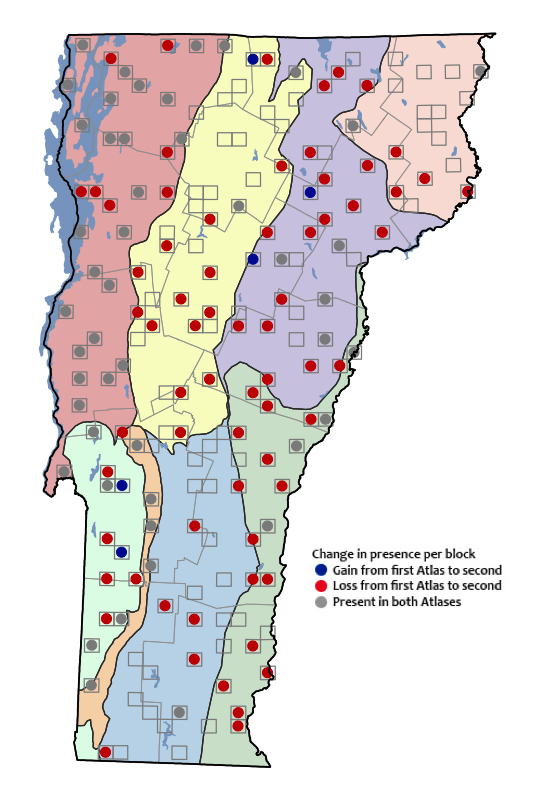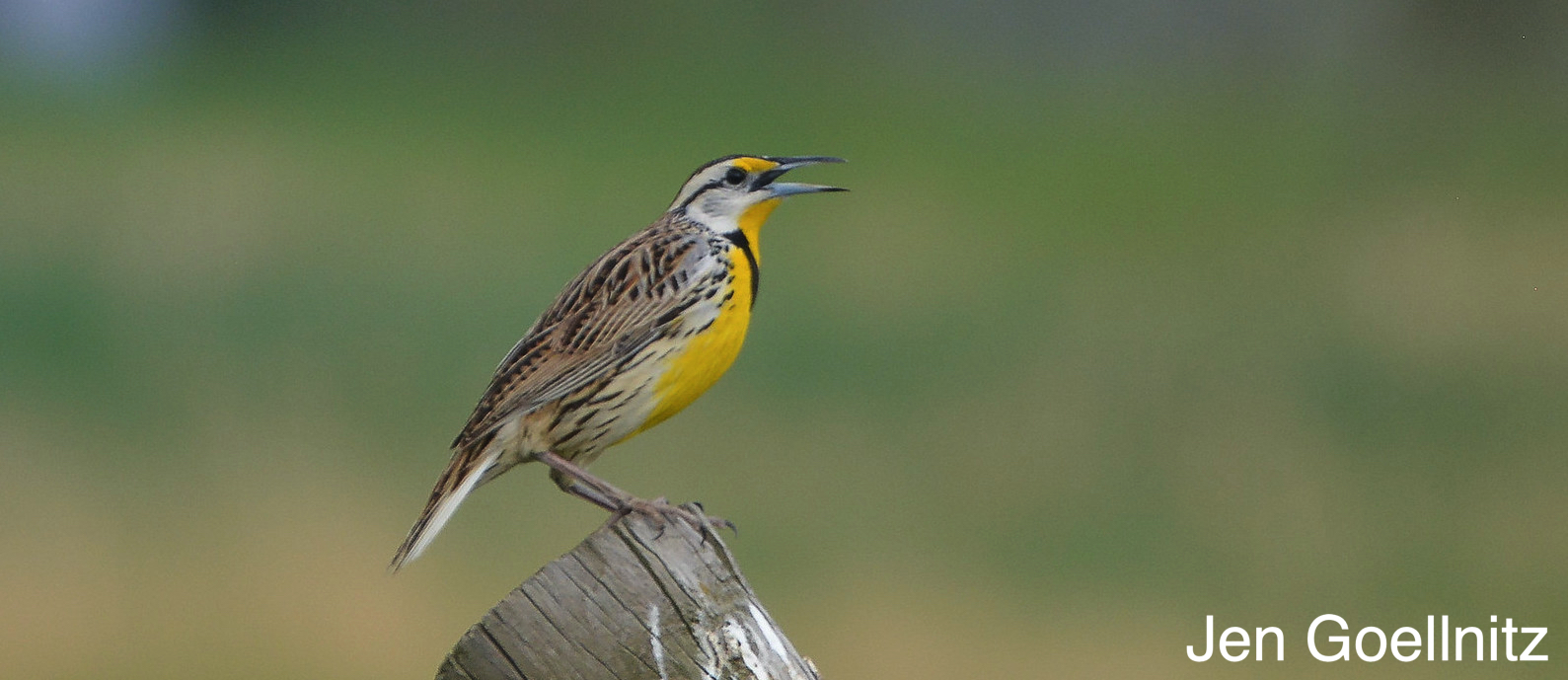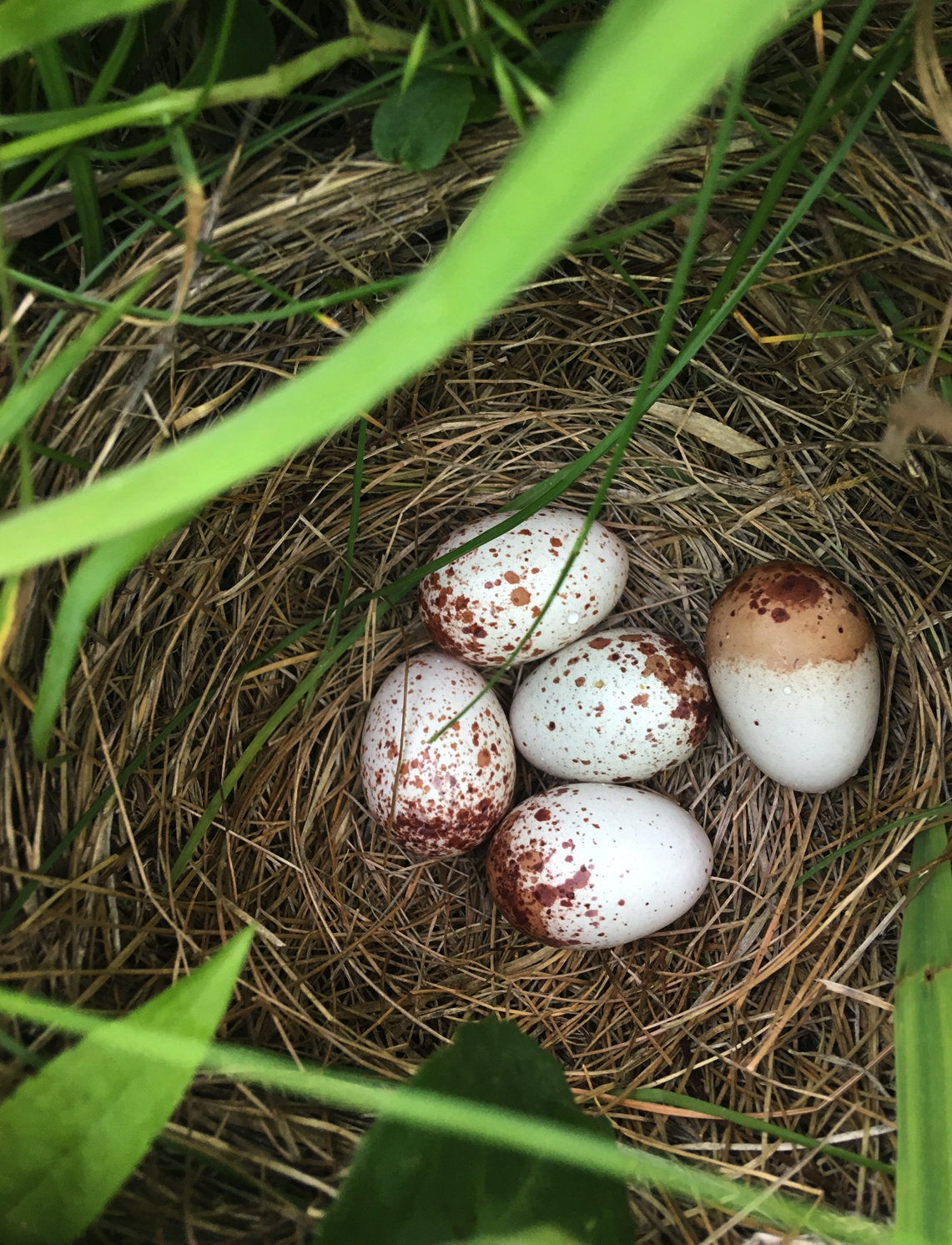Eastern Meadowlarks are ground-nesting grassland specialists.

Comparison of Eastern Meadowlark presence between the First and Second Vermont Breeding Bird Atlas. Click to enlarge.
Now that Vermont’s forests have reclaimed much of the landscape, the available habitat for grassland species, such as Eastern Meadowlarks which require extensive tracts of hayfields, have declined precipitously. More common grassland species, such as Bobolinks, are also undergoing state-wide declines.
Henslow’s Sparrow, Upland Sandpiper, Sedge Wren, and Grasshopper Sparrow are other examples of grassland specialists who have been almost completely, if not completely, lost from the Vermont landscape due to reforestation and intensive agricultural practices.
Identification:
Breeding adults have a bright yellow breast with a black V-shaped “necklace”. Their face is white and yellow with heavy black eye lines. Their back is barred black and brown. White outer tail feathers (retrices) are visible during flight, particularly when flying away from the observer.
Meadowlarks have a distinctive flight pattern – a series of rapid wingbeats followed by a brief period of gliding.
Their song is a whistled, flute-like “spring of the year”. It is frequently sung from perches, such as fence posts.
Breeding Activity:
Eastern Meadowlarks required relatively large grass fields, at least 5, but ideally 10 hectares, for breeding habitat. A breeding pair’s territory is generally around 3 hectares. In Vermont they are primarily found in the Champlain Valley with scattered populations elsewhere.
Their nests (right) are typically built with elaborate roofs, similar to a dutch-oven. They have white eggs with brown speckling.
It’s best to avoid walking through hayfields during breeding season to prevent accidentally stepping on meadowlarks’ or other ground-nesting birds’ nests.
Conservation Actions:
Avoid fragmentation of large grassland parcels to maintain suitable habitat for meadowlarks and other grassland birds.
Don’t mow after June 1st, and wait to mow until July 15th (ideally August 1st) in order to allow meadowlarks and other grassland birds time to successfully fledge young. Mowing too early destroys nest and reduces breeding success to essentially zero.
For more information, read our grassland conservation pamphlet and/or contact our Grassland Ambassadors coordinator.
Banner Image by Jen Goellnitz under CC BY-NC 2.0.








